Roman gardens were an essential part of Roman life and culture, reflecting the beauty, tranquility, and architectural genius of the Eternal City. From the grand villas of the wealthy elite to the humble gardens of the common people, these gardens played a significant role in shaping the culture of Rome.
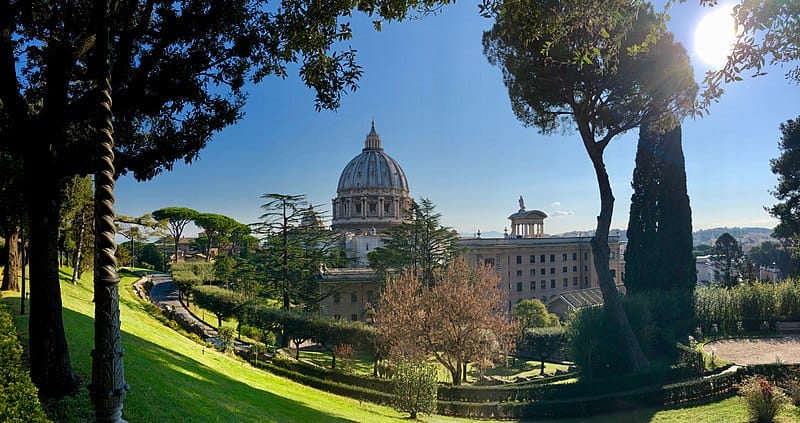
Source: Sonse, CC BY 2.0 https://creativecommons.org/licenses/by/2.0, via Wikimedia Commons
The historical significance of Roman gardens cannot be overstated. They were not only a source of aesthetic pleasure but also served as a symbol of power, wealth, and social status. Roman gardens were designed to be an extension of the home, providing a peaceful retreat from the hustle and bustle of city life. They were also used for entertainment purposes, with many gardens featuring fountains, sculptures, and other architectural elements that were meant to impress guests.
Key Takeaways
- Roman gardens were an essential part of Roman life and culture, reflecting the beauty and architectural genius of the Eternal City.
- Roman gardens served as a symbol of power, wealth, and social status.
- Roman gardens had unique architectural elements and flora.
Historical Significance of Roman Gardens
Villas and the Empire’s Grandeur
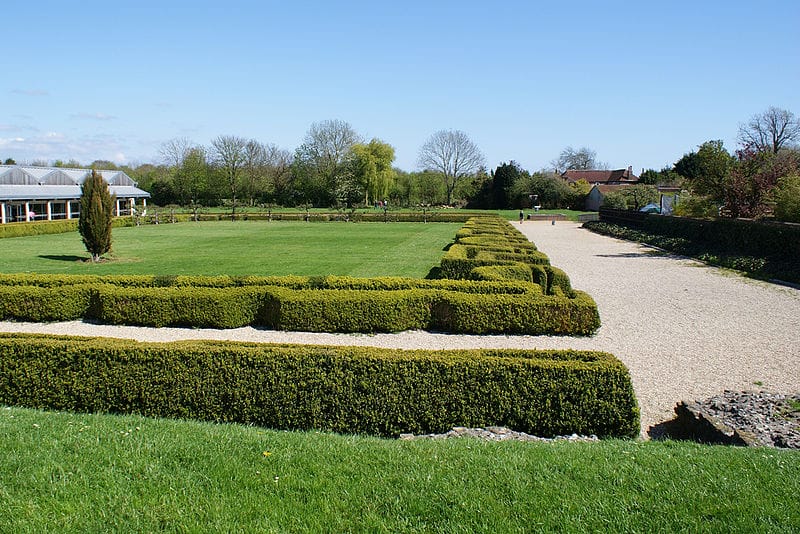
Source: David Spender from the United Kingdom, CC BY 2.0 https://creativecommons.org/licenses/by/2.0, via Wikimedia Commons
Villas were an essential part of Roman life, and they were often built around gardens. The villas were designed to showcase the wealth and grandeur of the empire, and they were often decorated with intricate mosaics and sculptures. The gardens of the villas were designed to be an extension of the living space, and they were often used for social and political gatherings.
Religious and Public Spaces
Religious and public spaces were also an essential part of Roman gardens. Temples and other religious structures were often built within the gardens, and they were used to showcase the power and influence of the empire. The Roman Forum and the Circus Maximus were also important public spaces that were often connected to the gardens. These spaces were used for social and political gatherings and were designed to showcase the power and influence of the empire.
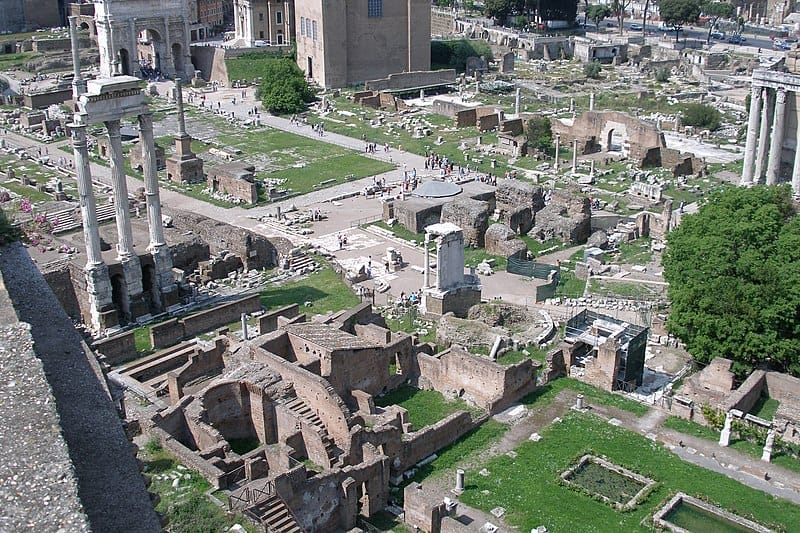
Source: © Vyacheslav Argenberg / https://www.vascoplanet.com/, CC BY 4.0 https://creativecommons.org/licenses/by/4.0, via Wikimedia Commons
Top 5 Roman Gardens
Villa Borghese: A Cultural Retreat
Villa Borghese is not just a garden but a cultural retreat that houses a museum and an art gallery. The garden is spread over 80 hectares and features a beautiful lake, fountains, and sculptures. Visitors can take a stroll through the garden and admire the beautiful flowers and trees. The garden also offers stunning views of Rome’s skyline.
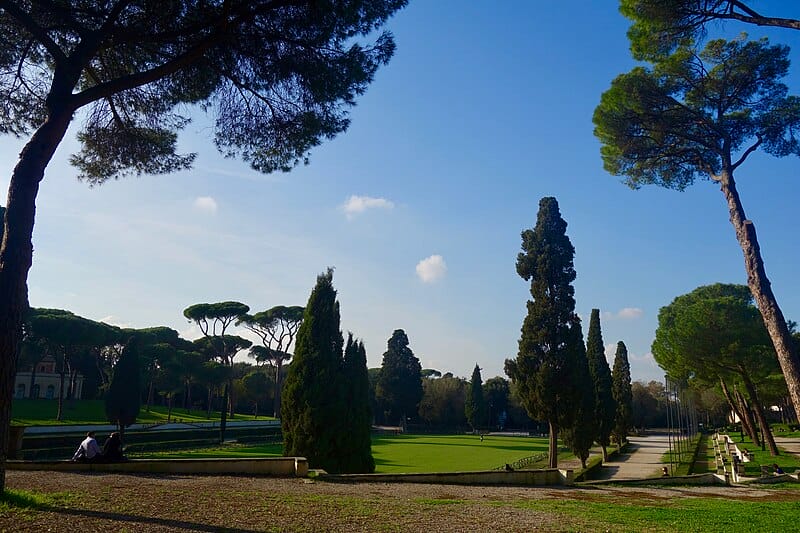
The origins of Villa Borghese date back to the early 17th century when Cardinal Scipione Borghese, a member of the powerful Borghese family and nephew of Pope Paul V, decided to create a vast estate on the outer parts of Rome. The cardinal, an avid art collector, commissioned the construction of the villa and its surrounding gardens to display his extensive art collection.
The gardens were designed in a classical style, featuring geometric layouts, fountains, and sculptures, reflecting the grandeur and opulence of the Borghese family. Over the centuries, the villa underwent various modifications, with different architectural styles being incorporated into its design.
Vatican Gardens: Spiritual Solitude
The Vatican Gardens are located within the Vatican City and offer a unique experience to visitors. The garden is spread over 23 hectares and is home to many rare and exotic plants. Visitors can take a guided tour of the garden and admire the beautiful fountains, sculptures, and grottoes. The garden also offers a peaceful retreat for those seeking spiritual solitude.
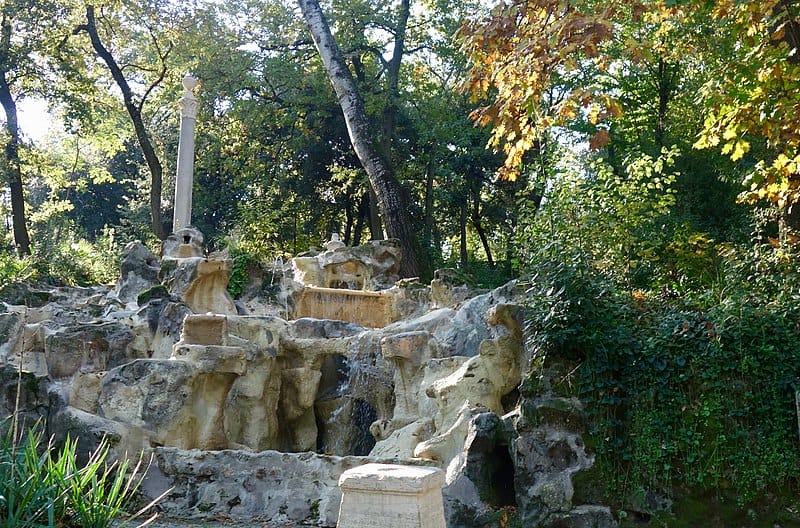
The Vatican gardens underwent significant expansion and beautification during the Renaissance. Pope Julius II, in the early 16th century, played a crucial role in transforming the gardens into a true Renaissance-style space. He commissioned the famous architect Donato Bramante to design a series of terraces and walkways, integrating the gardens with the newly constructed Apostolic Palace and the Belvedere Courtyard. Over the centuries, various Popes have added their own touches to the gardens, incorporating different styles and elements, including English-style gardens, French formal gardens, and Italian Renaissance gardens.

Villa Doria Pamphili: A Verdant Oasis
Villa Doria Pamphili is one of the largest parks in Rome and offers a verdant oasis in the heart of the city. The park is spread over 184 hectares and features beautiful gardens, fountains, and sculptures. Visitors can take a stroll through the park and admire the beautiful flowers and trees. The park also offers stunning views of the city.
The villa was built on the grounds of an earlier estate, which had been purchased by the Pamphili family in 1630. The renowned architect Alessandro Algardi, along with Giovanni Francesco Grimaldi, was responsible for designing the villa and its surrounding gardens. The main building, known as the Casino del Bel Respiro, was completed in 1644 and is a prime example of Baroque architecture, featuring elaborate decorations, grand halls, and stunning frescoes.

The Pamphili family maintained the estate for centuries, expanding and enhancing the gardens and hosting lavish events that attracted Rome’s elite. In the 19th century, the family merged with the Doria family through marriage, creating the Doria Pamphili lineage, which still exists today.
Aventine Hill’s Orange Garden: Scenic Views
The Aventine Hill‘s Orange Garden is a hidden gem in Rome that offers scenic views of the city. The garden is located on top of the Aventine Hill and is home to many orange trees. Visitors can take a stroll through the garden and admire the beautiful flowers and trees. The garden also offers stunning views of the city’s skyline.
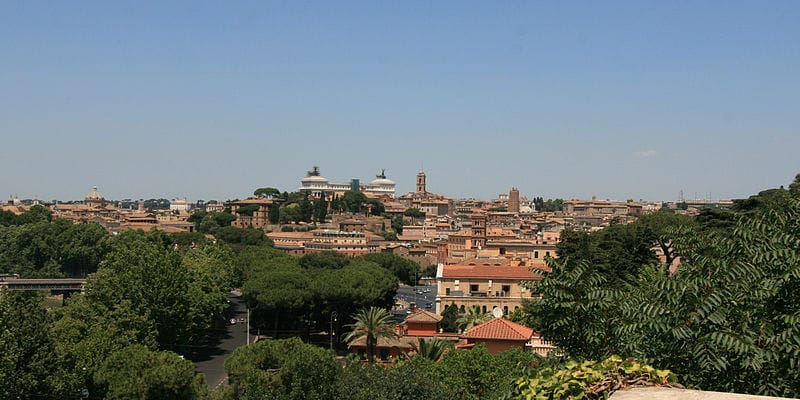
The area where the garden now sits was once the site of the Savelli family’s fortress, which stood on the ruins of an ancient Roman fortification. Although little of the fortress remains today, the garden retains the name Parco Savello in honor of the family. The garden was designed to take advantage of the natural beauty of Aventine Hill and to provide a peaceful retreat for both locals and visitors.
The garden gets its nickname from the numerous bitter orange trees that line its paths. These trees are not only beautiful but also have a symbolic significance. According to tradition, the first orange tree in Rome was planted by St. Dominic in the nearby Basilica of Santa Sabina in the 13th century. The trees in the Orange Garden are said to be descendants of this original tree.
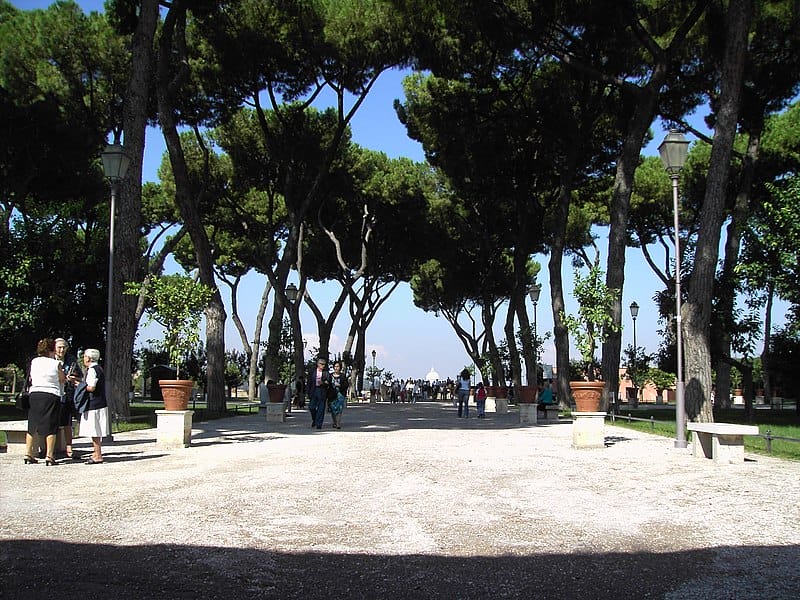
Parco degli Acquedotti: Walking Through History
Parco degli Acquedotti is a beautiful garden that offers a unique experience to visitors. The park is located on the outskirts of Rome and is home to many ancient Roman aqueducts. Visitors can take a stroll through the park and admire the beautiful aqueducts. The park also offers a peaceful retreat for those seeking to escape the city’s chaos.
It is a remarkable and expansive public park located in the southeastern part of Rome, within the Appian Way Regional Park (Parco Regionale dell’Appia Antica). Spanning over 593 acres, the park is named after the ancient Roman aqueducts that run through it, and it offers visitors a unique opportunity to explore a landscape rich in history, archaeology, and natural beauty.
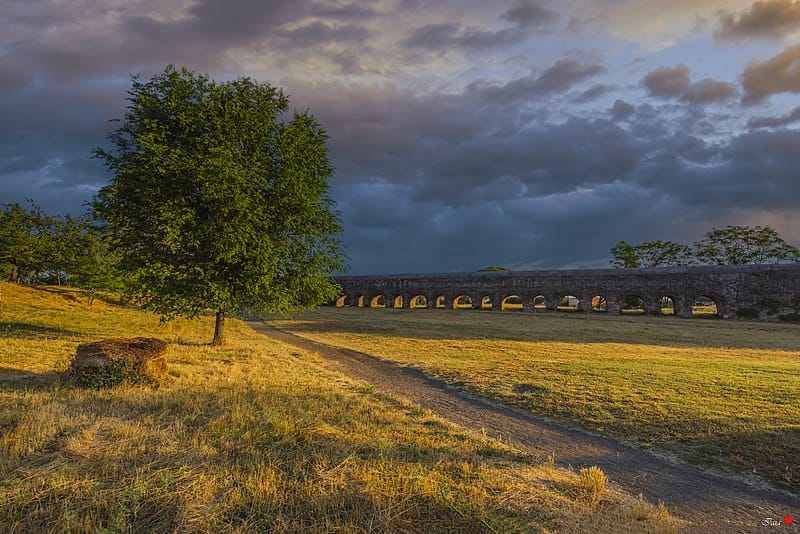
The park’s landscape is characterized by wide open fields, rolling hills, and clusters of trees, all interspersed with the dramatic remains of the ancient aqueducts. The setting is rustic and pastoral, offering a glimpse of the Roman countryside as it might have looked in antiquity.
The park is rich in biodiversity, with a variety of plant species, including pines, cypresses, and Mediterranean shrubs. In the spring and summer, the fields are often covered with wildflowers, adding color and vibrancy to the scenery.
Architectural Elements and Flora
Fountains and Water Features
Fountains and water features were popular in Roman gardens and were often used as focal points. The sound of water added a calming effect to the garden, while the visual display of water added a stunning visual element. The Villa d’Este in Tivoli, Italy, is a great example of a Roman garden with impressive water features.
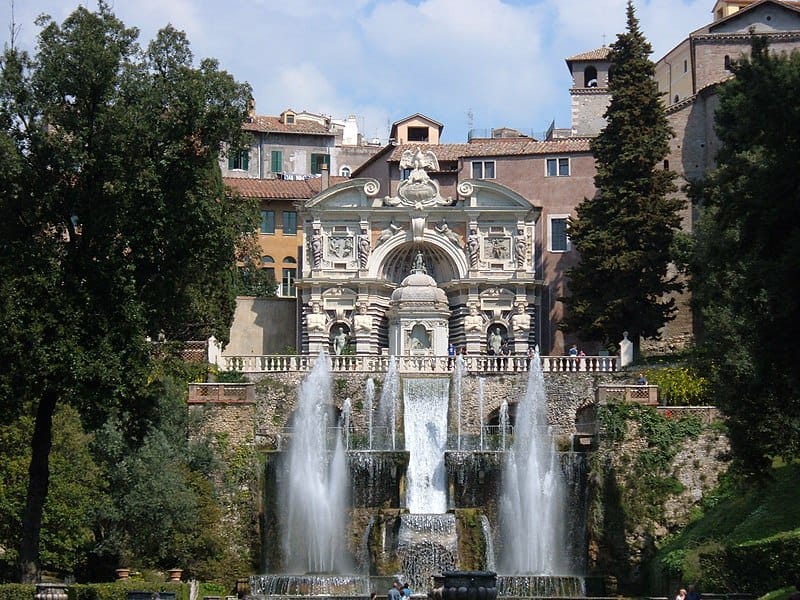
Statues and Terrace Designs
Statues were also a common feature in Roman gardens, and they were often placed in strategic locations to create a sense of balance and symmetry. Terrace designs were also popular in Roman gardens, and they were used to create different levels and spaces within the garden. The Villa Medici in Rome is an excellent example of a Roman garden with beautiful terraces and statues.
Botanical Variety and Greenhouses
Roman gardens were known for their botanical variety, and gardeners often chose plants based on their color, fragrance, and texture. Roses were particularly popular, and they were often used to create beautiful flower beds and borders. Botanical gardens were also present in ancient Rome, and they were used to study and cultivate different plant species. Greenhouses were also used to protect delicate plants and extend the growing season. The Orto Botanico in Rome is a great example of a Roman botanical garden.
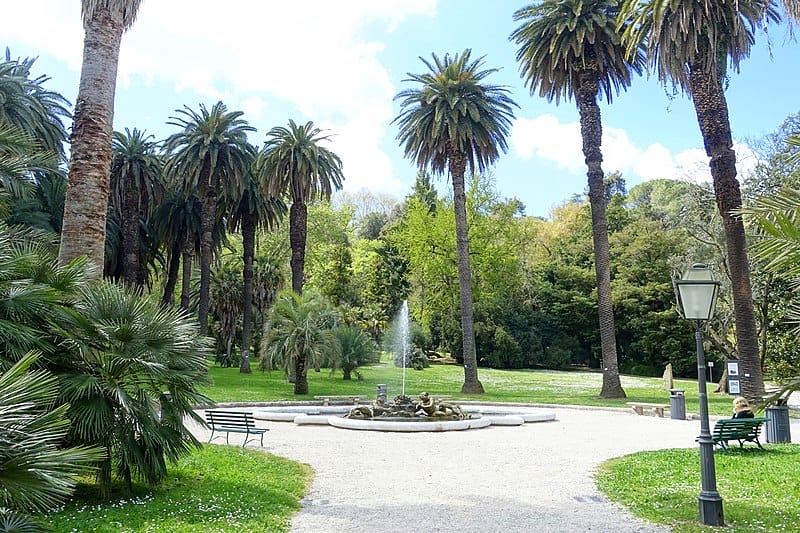
People Also Ask:
What are the most famous Roman gardens one can visit?
Rome is home to several famous gardens that are worth visiting. Some of the most popular ones include Villa Borghese Gardens, Vatican Gardens, and the Garden of Ninfa. These gardens are known for their stunning landscapes, beautiful fountains, and sculptures.
Can you list some secret or lesser-known gardens in Rome?
Apart from the famous gardens, Rome also has many hidden and lesser-known gardens that are worth exploring. The Orto Botanico di Roma is one such garden that is not very well-known among tourists. This botanical garden houses over 3000 species of plants and is a great place for nature lovers. The Garden of the Oranges is another hidden gem that offers stunning views of the city and is a perfect spot for a picnic.
How did ancient Roman gardens designs influence modern landscaping?
Ancient Roman gardens designs have had a significant impact on modern landscaping. The Romans were known for their use of symmetry, geometry, and water features in their gardens. These design principles have been adapted and incorporated into modern landscaping, especially in formal gardens. The use of hedges, topiary, and water features like fountains and pools can be traced back to ancient Roman gardens.
What are the typical features found in a Roman garden?
Roman gardens were characterized by their symmetry and order. They often featured geometric shapes, such as squares and circles, and were divided into sections by paths or hedges. Water features like fountains, pools, and canals were also common, as were sculptures and topiary. Roman gardens were also known for their use of colorful flowers and fragrant herbs.
What are the various types of gardens that existed during the Roman Empire?
During the Roman Empire, several types of gardens existed, each with its own purpose. Villa gardens were private gardens that were attached to the Roman villas and were used for relaxation and entertainment. Horti gardens were public gardens that were used for social and cultural events. Thermae gardens were attached to Roman bathhouses and were used for relaxation and exercise. Finally, the Sacred Grove was a type of garden that was used for religious purposes.
How were the Roman gardens integrated into villas and what functions did they serve?
Gardens were an integral part of Roman villas and were used for various functions. They served as a place for relaxation and entertainment, as well as for growing food and herbs. Gardens were also used for displaying wealth and status and were often decorated with sculptures and fountains. They were designed to be aesthetically pleasing and to provide a sense of tranquility and harmony.
Hello, my name is Vladimir, and I am a part of the Roman-empire writing team.
I am a historian, and history is an integral part of my life.
To be honest, while I was in school, I didn’t like history so how did I end up studying it? Well, for that, I have to thank history-based strategy PC games. Thank you so much, Europa Universalis IV, and thank you, Medieval Total War.
Since games made me fall in love with history, I completed bachelor studies at Filozofski Fakultet Niš, a part of the University of Niš. My bachelor’s thesis was about Julis Caesar. Soon, I completed my master’s studies at the same university.
For years now, I have been working as a teacher in a local elementary school, but my passion for writing isn’t fulfilled, so I decided to pursue that ambition online. There were a few gigs, but most of them were not history-related.
Then I stumbled upon roman-empire.com, and now I am a part of something bigger. No, I am not a part of the ancient Roman Empire but of a creative writing team where I have the freedom to write about whatever I want. Yes, even about Star Wars. Stay tuned for that.
Anyway, I am better at writing about Rome than writing about me. But if you would like to contact me for any reason, you can do it at contact@roman-empire.net. Except for negative reviews, of course. 😀
Kind regards,
Vladimir
